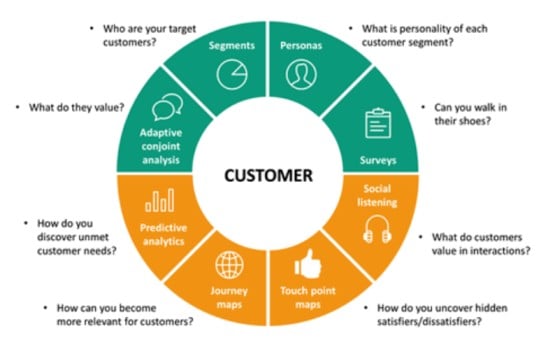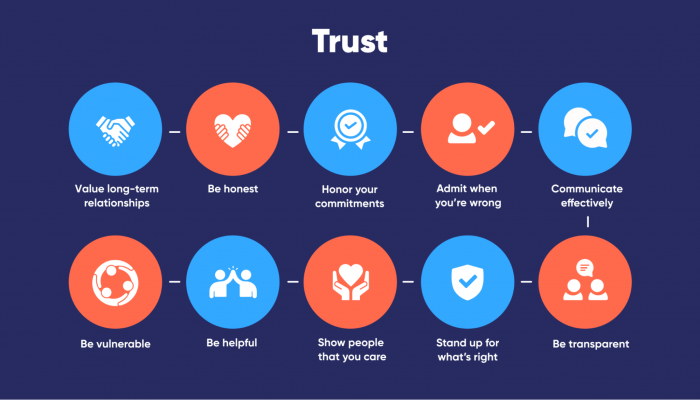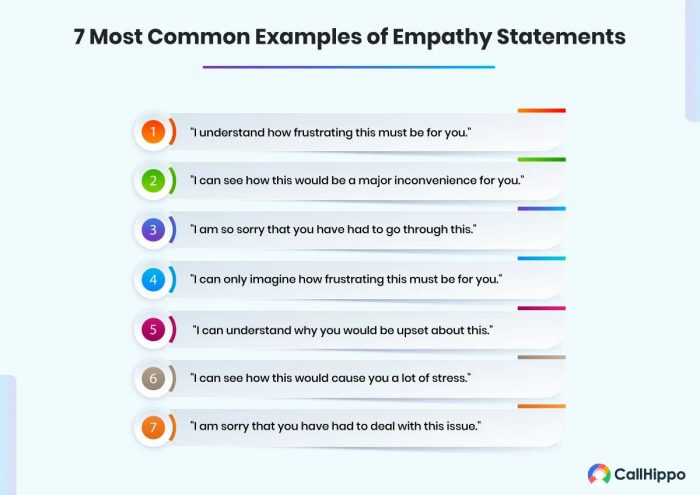Building strong customer relationships is crucial for the success of any business, whether it is a small start-up or a multinational corporation. It is imperative to prioritize customer satisfaction and create positive experiences for them. In today’s hyper-competitive market, customers have endless options and are likelier to stay loyal to a brand that provides exceptional customer service.
Effective communication is a key component in building strong customer relationships. This involves understanding customers’ needs, responding promptly to their inquiries and concerns, personalizing communication, using positive language, providing value, building trust, showing empathy, encouraging feedback, and maintaining consistency.
By implementing these 10 strategies, businesses can create a strong customer bond and foster long-term loyalty. This helps retain customers and leads to positive word-of-mouth marketing, which can attract new customers. In short, building strong customer relationships through effective communication is a win-win situation for both businesses and customers.
Empower Customer Relationships Through 10 Proven Strategies For Effective Communication
1. Understand Your Customers
To ensure customer satisfaction, it is crucial to comprehend their identities, requirements, and preferences. An effective communication strategy hinges on this understanding. It starts with gathering and analyzing customer data from diverse sources like purchase history, website analytics, social media interactions, and feedback. These insights illuminate customer behavior, preferences, and pain points.

Surveys and feedback mechanisms prove invaluable in comprehending customers further. Surveys reveal satisfaction levels, product/service experiences, and brand perceptions. Feedback channels, like chatbots, emails, and phone support, encourage customers to voice concerns and seek answers, offering deeper insights into their needs.
Analyzing the collected data empowers customer segmentation, facilitating tailored communication and personalized experiences for each group.
2. Be Responsive
A recent HubSpot survey shows that 66% of consumers expect a response from customer service in five minutes or less.
Being responsive is a critical strategy for building strong customer relationships. Customers today expect timely and efficient communication, and businesses that can deliver on this expectation stand to gain a competitive advantage. The following are some key considerations for implementing a responsive communication strategy:
Prompt response times: Customers want their inquiries and concerns addressed promptly, so it is important to have a system in place that enables you to respond quickly. This may involve setting up automated responses, using chatbots, or dedicating staff to monitoring and responding to customer inquiries.
Multiple channels for communication: Different customers have different communication preferences, so it is important to offer multiple channels for communication. These may include email, phone, social media, and live chat.
Consistent communication: Besides being responsive, it is important to be consistent. This means setting expectations for response times and consistently following through on those expectations. It also means ensuring the tone and messaging are consistent across all channels.
Training and support for staff: Finally, it is important to provide training and support for staff responsible for customer communication. This may involve providing training on effective communication strategies and resources and tools to help them respond quickly and efficiently.
3. Personalize Communications
In their 2017 State of Personalization Report, the customer data experts at Segment discovered that 40 percent of consumers spent more than originally planned after receiving personalized communication.
Personalizing communication with customers is an important strategy for building stronger customer relationships. Customers who feel that a company understands their specific needs and preferences are more likely to feel valued and engaged with the brand. Personalization involves tailoring communication to individual customers by using their names, personal details, and behavior to create a more relevant and meaningful interaction.
One way to personalize communication is to segment customers into different groups based on their preferences and behavior. For example, customers who frequently purchase certain products can be targeted with personalized email promotions and offers. Recently purchased customers can be sent follow-up emails to ask about their experience and offer additional information or support.
Another way to personalize communication is to use customer data to create customized experiences. For instance, e-commerce sites can use browsing history and past purchases to make personalized product recommendations. Personalization can also be achieved through personalized email subject lines, social media messages, and website content.
4. Use Positive Language
When engaging with customers, using positive language for a pleasant experience and lasting impact is vital. Positive language goes beyond friendliness; it means focusing on solutions instead of dwelling on problems. Employ encouraging and appreciative words to forge connections, building trust and loyalty.
Choose uplifting and empowering phrases. Rather than saying, “I don’t know,” say, “Let me find out for you,” showing your willingness to help. Replace “That’s not possible” with “Let me see what I can do,” demonstrating your commitment to collaboration and meeting their needs.

Consistently using positive language in emails, phone calls, and social media makes customers feel valued. Positive language creates a favorable atmosphere and encourages customer return.
5. Provide Value
Providing value is vital for stronger customer relationships. This involves offering customers something valuable, such as useful information, resources, or promotions. Sharing relevant and informative content through blog posts, videos, or infographics demonstrates expertise and builds trust.
Promotions and discounts are another way to provide value, attract customers, and show appreciation for their business. However, the value goes beyond discounts. It involves understanding customer needs and delivering in a meaningful and relevant manner.
Listening to feedback and adjusting offerings accordingly demonstrate that you value their opinions and are committed to meeting their needs. Overall, providing value enhances customer relationships and fosters long-term loyalty.
6. Build Trust
83% of consumers say they will not do business with brands they don’t trust.
Building trust is vital for strong customer relationships. Transparency, honesty, and reliability are key. Be open about business practices, including data usage and any potential challenges. Transparency builds credibility, and fosters trust.

Follow through on commitments and promises. Deliver products on time, respond promptly to inquiries, and resolve issues. Consistency in fulfilling obligations builds trust.
Take responsibility and be honest when mistakes happen. Own up to errors and offer solutions. Customers trust companies that admit faults and make amends.
7. Show Empathy
As per research by Freshworks, 52% of consumers stopped buying from a company due to their communication, with 17% of them quoting ‘insensitivity’ in engagement as the primary reason.
Empathy is crucial for strong customer relationships. It involves understanding and sharing others’ feelings, especially in customer service. Putting oneself in the customer’s shoes, acknowledging their emotions, and responding with compassion is key.

Empathy helps defuse frustration, build trust, and demonstrate genuine concern for customers’ well-being. Phrases like “I understand how you feel” show empathy, and validating their concerns further strengthens the connection.
Empathy not only calms angry customers but also fosters loyalty and trust. Customers are likelier to stay loyal When they perceive a company’s genuine care and concern for their well-being. Ultimately, empathy is essential in creating positive customer experiences and maintaining long-term relationships.
8. Encourage Feedback
Encouraging feedback from customers is a crucial strategy for building stronger customer relationships. It involves actively seeking and listening to customer feedback about their experiences with your products or services and using that feedback to improve and enhance the customer experience.
Encourage feedback by providing multiple channels for customers to share thoughts and opinions, like email surveys, social media polls, and website feedback forms. Promptly respond to customer comments and concerns to show their input is valued and issues will be addressed.
Take customer feedback seriously and use it to improve products or services by making changes based on suggestions or expressing gratitude for their input.
By actively encouraging and responding to customer feedback, you can show your customers that you are committed to providing the best possible experience and are willing to listen to their needs and concerns. This can help build trust and loyalty and ultimately lead to more sales.
9. Maintain Consistency
Maintaining consistency is vital for strong customer relationships. Consistent communication, product quality, and service delivery build trust and reliability. Communication consistency entails delivering the same message and tone across all channels.
This fosters a dependable brand image. Likewise, consistent product quality and service ensure customers always receive the same level of excellence. Companies must establish systems for consistency across all locations and channels.
Consistency in the customer experience means treating all customers equally and providing consistent touchpoints, from the website to in-store encounters. Ultimately, consistency fosters loyalty and encourages customers to continue doing business with a company.
10. Increase Customer Lifetime Value
The customer lifetime value (CLV) is the total amount of money a customer is expected to spend with a business over their relationship. Increasing customer lifetime value is a key objective for businesses that want to build sustainable growth, increase profitability, and strengthen customer relationships.
One strategy to increase customer lifetime value is to focus on retention. This means keeping existing customers engaged and satisfied with the company’s products or services so they continue to do business over the long term.
To increase customer lifetime value, businesses can:
- Offer personalized experiences: By tailoring products, services, and communication to each customer’s unique preferences and needs, businesses can increase the likelihood of customer loyalty.
- Provide excellent customer service: Responding promptly and helpfully to customer inquiries, complaints, and feedback can build trust and strengthen customer relationships.
- Offer loyalty programs and rewards: Incentivizing customers who continue to do business with the company can increase their lifetime value and encourage repeat purchases.
- Continuously improve the customer experience: By regularly gathering customer feedback and using it to improve products, services, and processes, businesses can increase customer satisfaction and loyalty.
- Use marketing automation, targeted marketing, and upselling: Businesses can increase revenue and customer lifetime value by identifying customers who are most likely to be interested in additional products or services and tailoring marketing messages to them.
Increasing customer lifetime value requires building strong customer relationships, providing excellent customer service, and continually improving the customer experience. By doing so, businesses can increase revenue and profitability while building a loyal customer base.
Conclusion
Building strong customer relationships is vital for business success. Effective communication is key to establishing and maintaining these relationships.
By following these strategies outlined, businesses can enhance customer communication, leading to better experiences, loyalty, and advocacy.
In today’s competitive landscape, strong customer relationships are a necessity. Prioritizing effective communication differentiates companies, fostering lasting relationships that drive growth and success.



